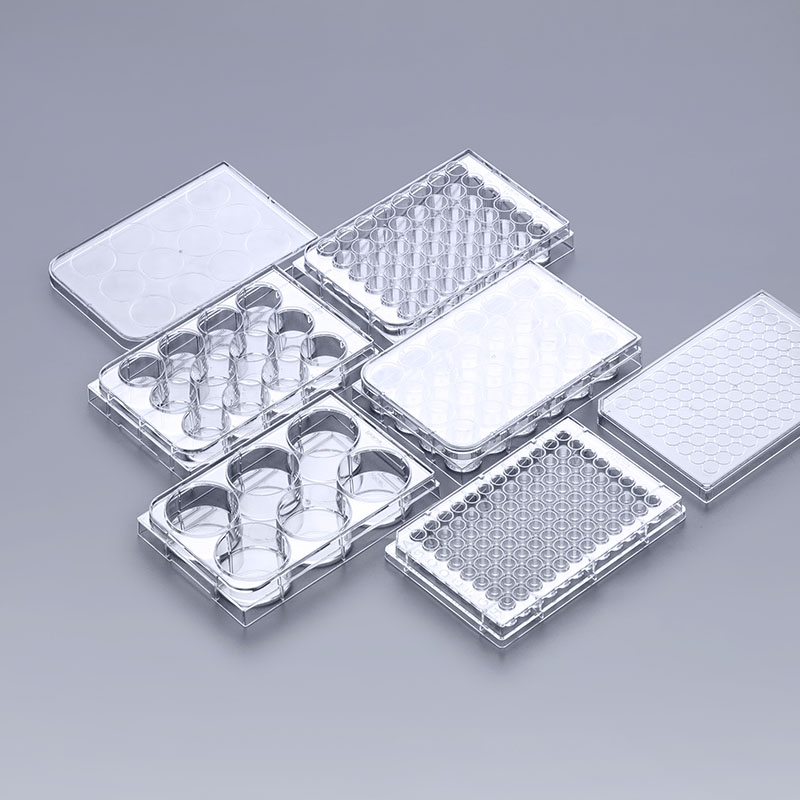In cell culture experiments, cell culture plates, as a porous container, are widely used in fields such as cell growth, drug screening, and protein concentration determination. It has various specifications, and the common ones are 6-well, 12-well, 24-well, 48-well, and 96-well. Maintaining consistency between these wells is essential for obtaining reliable experimental results.
Definition of consistency between wells
Well consistency refers to the same physical and chemical properties of each well of the cell culture plate, including factors such as well size, shape, distribution of culture medium, temperature, and gas exchange. Maintaining this consistency helps ensure that cells in each well grow under the same conditions, making experimental results more comparable and reliable.
Importance of consistency
1. Ensure experimental repeatability. Experimental repeatability is the core of scientific research. Well consistency can reduce the impact of variables and make the results between different wells more similar. This is essential for verifying experimental results and further experimental design.
2. Reduce errors and deviations. Minor differences in cell culture, such as changes in culture medium uniformity and cell density, can lead to deviations in experimental results. By ensuring consistency between wells, researchers can more effectively control these variables, thereby reducing experimental errors.
3. Improve the reliability of data. When the conditions of each well are consistent, the credibility and reliability of the data will be greatly improved. Especially when conducting drug screening or comparing different treatment groups, consistency can provide more convincing evidence and help researchers draw accurate conclusions.
4. Optimize resource utilization. In high-throughput screening experiments, cell culture plates are often used to process multiple samples in parallel. Consistency between wells not only improves the efficiency of the experiment, but also optimizes the use of reagents and resources and reduces experimental costs.
How to achieve consistency between wells
In order to ensure consistency between wells of cell culture plates, researchers can take the following measures:
1. Standardized operating procedures: Ensure that standardized operating procedures are followed in cell inoculation, culture medium addition and processing steps.
2. Choose high-quality culture plates: Select cell culture plates that have undergone strict quality control to ensure that the design and manufacture of each well are consistent.
3. Regularly calibrate equipment: Ensure that the equipment used is calibrated regularly to maintain consistency in culture conditions.
By ensuring the consistency between wells in cell culture plates, researchers can improve the reliability of experiments and the reproducibility of data, thereby promoting the in-depth development of scientific research. Therefore, in the process of cell culture, paying attention to the consistency between wells will lay a solid foundation for obtaining more accurate experimental results.
The FAI climbed 5.9 percent year-on-year in the first 11 months of 2018, quickening from the 5.7-percent growth in Jan-Oct, the National Bureau of Statistics (NBS) said Friday in an online statement.
The key indicator of investment, dubbed a major growth driver, hit the bottom in August and has since started to rebound steadily.
In the face of emerging economic challenges home and abroad, China has stepped up efforts to stabilize investment, in particular rolling out measures to motivate private investors and channel funds into infrastructure.
Friday's data showed private investment, accounting for more than 60 percent of the total FAI, expanded by a brisk 8.7 percent.
NBS spokesperson Mao Shengyong said funds into weak economic links registered rapid increases as investment in environmental protection and agriculture jumped 42 percent and 12.5 percent respectively, much faster than the average.
In breakdown, investment in high-tech and equipment manufacturing remained vigorous with 16.1-percent and 11.6-percent increases respectively in the first 11 months. Infrastructure investment gained 3.7 percent, staying flat. Investment in property development rose 9.7 percent, also unchanged.
 English
English



















































